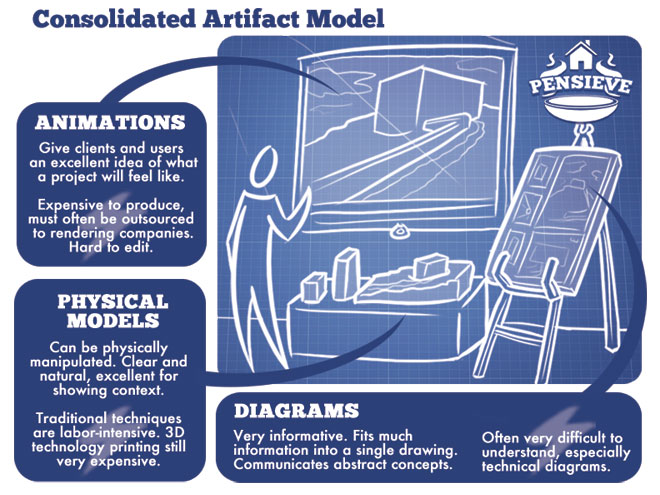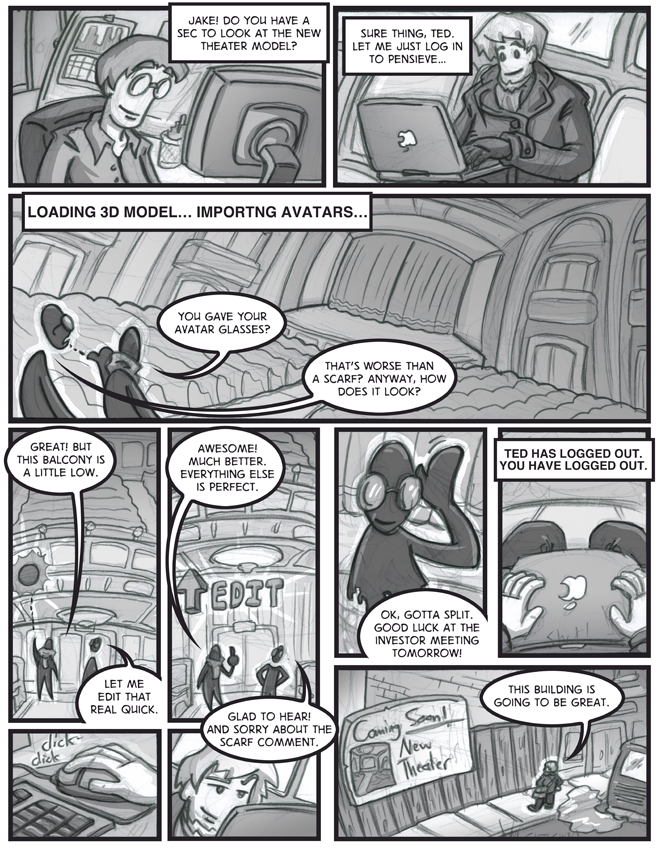

Synthesis: Identifying the Problem
Based on my investigations, I decided to explore a method for architects to communicate more effectively with clients by visualizing their projects as interactive 3D environments rather than by expensive walkthrough animations or abstract diagrams.

Design: The Solution Comes to Light
My hypothetical product would be a plugin for the popular Revit drafting software that could take existing architectural models and export them into a format that allows the client and architect to move through the building as though they were controlling a first-person video game.
Testing: Virtual Tours
This solution was tested by creating a pair of virtual apartments within a video game engine and letting users walk around independently while giving their thoughts on the design. Results were positive, when the testers weren’t purposely jumping out of windows.
Date
Fall 2011
Class
User-Centered
Research and Evaluation
Carnegie Mellon University
Prof. Matt Kam
Techs
Source Development Kit
Photoshop
Skills
Heuristic Evaluation
Think-Aloud Testing
Literature Reviews
Contexual Inquiry
Storyboarding